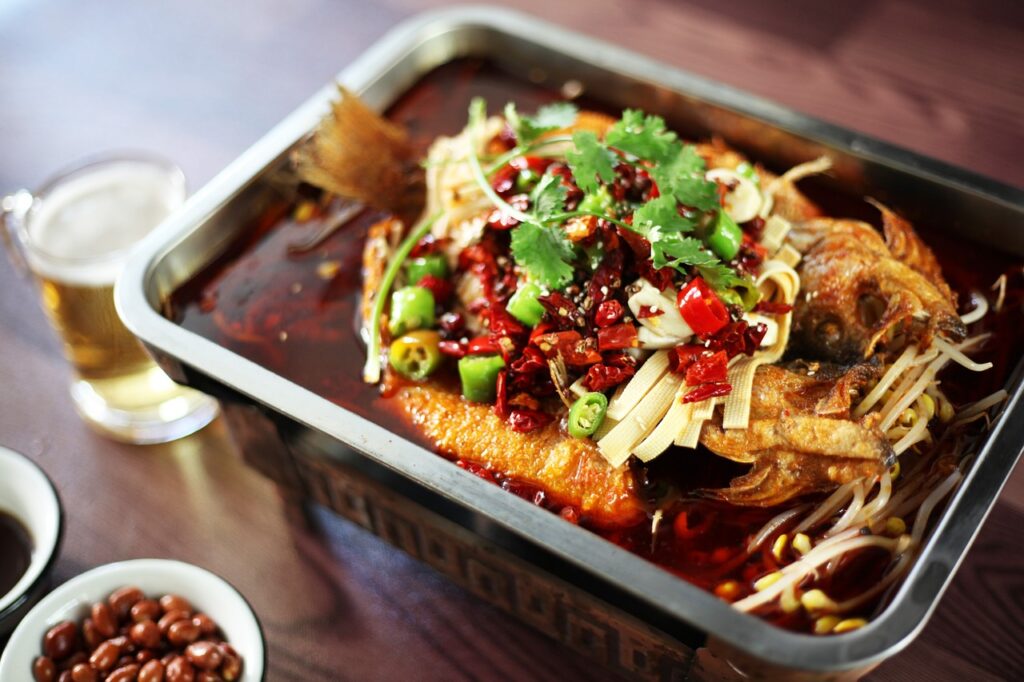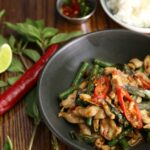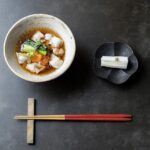China, with its vast territory and long history, offers one of the most diverse and sophisticated culinary landscapes in the world. For a food lover, a journey through China is an adventure filled with unique flavors, vibrant colors, and an endless variety of dishes. This guide will take you on a gastronomic tour through China’s most famous culinary regions, highlighting the must-try dishes and providing tips for an unforgettable food experience.
The Eight Great Cuisines of China
China’s culinary heritage is often categorized into eight major cuisines, each with its own distinct flavors and cooking techniques. These cuisines reflect the diverse geography, climate, and cultural history of their regions.
1. Sichuan Cuisine
Sichuan cuisine, hailing from the southwestern province of Sichuan, is renowned for its bold and spicy flavors. The use of Sichuan peppercorns creates a unique, numbing sensation that sets this cuisine apart. Must-try dishes include:
- Mapo Tofu: A spicy and savory dish made with tofu, minced meat, and a rich chili bean paste sauce.
- Kung Pao Chicken: A stir-fry dish with chicken, peanuts, vegetables, and chili peppers.
- Twice-Cooked Pork: Pork belly that is first simmered, then stir-fried with garlic, ginger, and spicy bean paste.
2. Cantonese Cuisine
Originating from Guangdong province, Cantonese cuisine is famous for its subtle flavors and fresh ingredients. Steaming and stir-frying are common cooking methods. Key dishes include:
- Dim Sum: A variety of small, bite-sized dishes typically served with tea. Favorites include shrimp dumplings (har gow), pork buns (char siu bao), and rice noodle rolls (cheung fun).
- Char Siu: Cantonese barbecued pork, known for its sweet and savory glaze.
- Wonton Noodles: A comforting soup featuring egg noodles and wontons filled with shrimp or pork.
3. Shandong Cuisine
Shandong cuisine, from the eastern coastal province, emphasizes seafood and hearty flavors. Techniques like braising and deep-frying are prevalent. Notable dishes include:
- Braised Abalone: A luxurious dish featuring abalone braised in a rich, savory sauce.
- Sweet and Sour Carp: Deep-fried carp served with a tangy sweet and sour sauce.
- Dezhou Braised Chicken: A slow-cooked chicken dish that is tender and flavorful.
4. Jiangsu Cuisine
Jiangsu cuisine, also known as Su cuisine, comes from the fertile Jiangsu province. This cuisine is characterized by its refined cooking techniques and harmonious flavors. Signature dishes include:
- Sweet and Sour Mandarin Fish: A visually stunning dish with a crispy exterior and tender interior, coated in a sweet and sour sauce.
- Lion’s Head Meatballs: Large, juicy meatballs made from minced pork and stewed with vegetables.
- Yangzhou Fried Rice: A colorful and flavorful fried rice with a mix of vegetables, ham, and shrimp.
5. Zhejiang Cuisine
Zhejiang cuisine, from the eastern province of Zhejiang, is known for its fresh ingredients and light, delicate flavors. Key dishes to try are:
- Dongpo Pork: Braised pork belly named after the famous poet Su Dongpo, known for its melt-in-your-mouth texture.
- West Lake Fish in Vinegar Gravy: A freshwater fish dish served in a sweet and sour sauce.
- Beggar’s Chicken: A whole chicken marinated, wrapped in lotus leaves, and baked in clay.
6. Fujian Cuisine
Fujian cuisine, from the southeastern coastal province, is distinguished by its emphasis on seafood and umami flavors. Signature dishes include:
- Buddha Jumps Over the Wall: A luxurious soup made with a variety of high-quality ingredients like abalone, sea cucumber, and scallops.
- Fuzhou Fish Balls: Fish balls with a pork filling, served in a savory broth.
- Red Yeast Rice Pork: Pork marinated and cooked with red yeast rice, giving it a distinctive red color and unique flavor.
7. Hunan Cuisine
Hunan cuisine, from the southern province of Hunan, is known for its hot and sour flavors. It often features pickled ingredients and liberal use of chili peppers. Must-try dishes are:
- Chairman Mao’s Red-Braised Pork: A beloved dish of braised pork belly in a rich, sweet, and savory sauce.
- Steamed Fish Head with Diced Hot Red Peppers: A spicy and flavorful dish showcasing Hunan’s love for chili.
- Dong’an Chicken: A chicken dish cooked with vinegar, ginger, and chili, offering a unique tangy and spicy flavor.
8. Anhui Cuisine
Anhui cuisine, from the inland province of Anhui, emphasizes wild game and herbs. Known for its rustic flavors and hearty dishes, notable examples are:
- Steamed Stone Frog: A delicacy featuring frog steamed with herbs.
- Li Hongzhang Hotchpotch: A complex stew named after a Qing Dynasty official, made with a variety of meats and vegetables.
- Braised Soft Shell Turtle with Ham: A rich and savory dish that combines turtle meat with ham.
Street Food: A Culinary Adventure
Beyond the formal dining experiences, China’s street food offers an exciting and accessible way to explore its culinary diversity. Each region boasts its own specialties, and wandering through local markets and food streets is a must for any food lover.
Beijing’s Street Food
- Jianbing: A popular breakfast crepe made with egg, scallions, cilantro, and a variety of fillings.
- Roujiamo: Often referred to as a Chinese hamburger, this dish consists of a flatbread filled with seasoned meat.
- Tanghulu: Skewered candied fruits, often hawthorn berries, coated in a crunchy sugar shell.
Shanghai’s Street Food
- Xiaolongbao: Steamed soup dumplings filled with pork or crab and a flavorful broth.
- Shengjianbao: Pan-fried buns with a crispy bottom and juicy pork filling.
- Cong You Bing: Scallion pancakes that are crispy on the outside and soft on the inside.
Xi’an’s Street Food
- Biang Biang Noodles: Wide, hand-pulled noodles served with a spicy and savory sauce.
- Yang Rou Pao Mo: A hearty soup with torn pieces of flatbread and lamb.
- Rou Jia Mo: Similar to Beijing’s roujiamo but with regional variations in the seasoning.
Tips for Food Lovers Traveling in China
Traveling through China as a food lover can be an exhilarating experience. Here are some tips to help you make the most of your culinary journey:
1. Embrace Local Dining Etiquette
Understanding Chinese dining etiquette can enhance your experience. For example, it’s customary to share dishes family-style, use chopsticks properly, and show respect by allowing elders to begin eating first.
2. Learn Basic Mandarin Phrases
While many restaurants in major cities may have English menus, learning basic Mandarin phrases related to food can be incredibly helpful. Phrases like “Wǒ yào zhège” (I want this) or “Wǒ bù chī là” (I don’t eat spicy) can make ordering easier.
3. Explore Beyond Tourist Areas
To experience authentic local flavors, venture beyond tourist-heavy areas. Visit local markets, food stalls, and small family-run restaurants where locals dine.
4. Be Adventurous
China’s culinary scene is vast and varied. Be open to trying new dishes and ingredients, even if they seem unfamiliar. You might discover new favorite flavors and textures.
5. Respect Food Safety Practices
While street food is a highlight, ensure you eat at stalls with high turnover to ensure freshness. Pay attention to hygiene practices, and when in doubt, opt for cooked food over raw.
Conclusion: A Culinary Journey Worth Taking
China’s rich and diverse culinary landscape offers an unparalleled experience for food lovers. From the bold flavors of Sichuan cuisine to the delicate tastes of Cantonese dim sum, every region presents its own unique culinary treasures. By exploring the street food scene, embracing local dining customs, and being open to new experiences, you can truly savor the essence of Chinese cuisine. Whether you’re a seasoned traveler or embarking on your first trip to China, this guide will help you navigate and appreciate the remarkable world of Chinese food. Happy eating!


